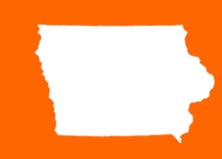

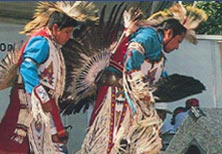
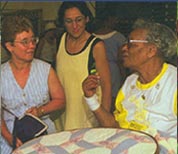
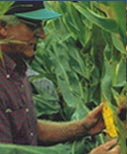

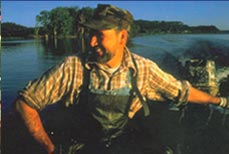
| Resources | ||||||
|
||||||
| Learning Guide |
| 1. Social Studies |
| 2. Language Arts |
| 3. Music |
| 4. Art |
| 5. Special: Multi-Disciplinary, Culminating Activities |
|
Much information about local and state cultural traditions can be gained from books in libraries, articles in journals, and from materials in research archives. Another primary source for information resides in the thoughts and memories of tradition bearers—people who know about and practice a particular tradition. A way of getting this information is through a formal interview. Interviewing is one method of conducting “ethnographic research,” that is, research about a particular cultural community. To do good research, students must identify tradition bearers—people who by their knowledge and skill, good memory or particular role are especially well qualified to provide information. For some traditions, just about any member of the community has knowledge—say, how to celebrate a birthday. Other traditions require more specialized knowledge—how to cook a particular dish or sing the lyrics of a traditional song. Your family, friends, and neighbors can often point you to a person “who knows about that.” And you need to follow those leads until you find such people. Some of these people are included in the Iowa Folk & Traditional Arts Roster. Teachers, parents, neighbors, relatives, librarians, local folklorists, and historians can help lead you to them and others.
Folklife Background Decide on what constitutes the “community” for the purposes of the research. Is it everyone in your town, or is the “community” people who worked at a particular factory? Is the “community” made up of farmers, members of your ethnic group, or just your relatives? Establish the scope of the research. Will it be general where you document all the traditions of a particular community, or is it more focused on one or another type of tradition? For ideas, view the videotape Iowa Folks and Folklife. There are thousands of local cultural traditions in Iowa to research. The following list gives only a sample. Students might direct their interviews to any of the following types of traditions, or some combination: VERBAL ART: tall tales, legends, humorous stories, oral biography, superstitions, riddles, jokes, proverbs and sayings, rhymes, family oral history and stories, work stories, school stories, dialect, sermons, cheers, toasts, cowboy poetry. SONG: ballads, work songs, ethnic songs, game songs, sports songs, school songs, lullabies, religious songs. DANCE: social dances, religious dances, ethnic dances. GAMES AND PLAY: tag games, guessing games, children’s games. VERNACULAR ARCHITECTURE: houses, outbuildings, floor plans, construction techniques and materials, tools, fences, wall murals, mailboxes, bridges, yard art, garden decoration. FOODWAYS: recipes, food preparation techniques, cooking technology, gardening, canning and curing, religious and celebratory uses of food. OCCUPATIONS: boatbuilding, blacksmithing, mining, tool making, machine making, furniture making. FOLK ART: quilting, weaving, embroidery, egg decoration, paper work, leather and bead work, rosemaling, jewelry making. HOME MEDICINE: home remedies, healing rituals. CELEBRATIONS AND RITES OF PASSAGE: rituals of birth, baptism, initiations, marriage, death; seasonal and calendrical events, public holiday traditions, festivals and fairs. |
Previous |
| | Next |
| Objectives | ||||
Students will be able to:
|
| Cross References |
Instructional Program: Family Folklore |
 |
[PHOTO BY ERIN ROTH] La Baccam, a Tai Dam woman from Vietnam, prepares an Asian dish in her home in Des Moines. |
 |
[PHOTO BY CAROLINE TRUMPOLD] A basket of Easter eggs made by Terry Roemig from Amana. |
| smithsonian institution |
 |
pioneer hi-bred international, inc. |
iowa sesquicentennial commission |
 |
iowa arts council |
